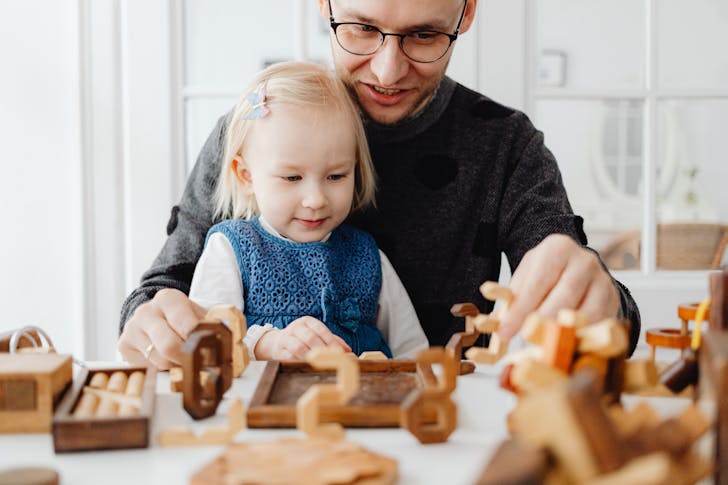
Here’s How Your Brain Orchestrates the Magic of Talking

Talking feels easy, but under the surface, your brain is running a high-stakes concert. Not one part, but a full network works together to help you speak clearly and fluently. It is not a solo act. Rather, it is a well-rehearsed symphony.
This network involves hearing, movement, memory, and self-correction. Your brain doesn’t just spit out words. It plans, listens, adjusts, and keeps everything in sync, almost like a musical performance inside your skull.

Karolina / Pexels / Before your tongue or lips move, your brain locks onto a sound. Not the movement to make that sound, but the sound itself.
So, it is like humming a tune in your head before singing out loud.
This is why you adjust your voice when you hear yourself off-key in real time. Your brain hears the mistake and automatically tweaks the sound. That is the power of sensory feedback.
The Motor System Joins the Party
Speech isn’t just about words. It is also about movement. That is where the motor system comes in. It controls the physical parts that shape your speech, like your lips, jaw, and vocal cords.
But these motor areas don’t work alone. They constantly check the sound you are producing and compare it to what you meant to say. It is a fast feedback loop that keeps your speech on track.
Area Spt, the Translator in the Middle
In the back of your left brain, there is a small region called Area Spt. It might be small, but it plays a big role. It connects what you want to say with how your muscles should move to say it.
Think of it like a conductor with a headset, taking in sound goals from the auditory system and sending precise orders to the motor crew. It also listens in and helps make real-time corrections if something sounds off.

Jep / Pexels / When you decide to speak, Broca’s area jumps into action. It lives in your left frontal lobe and helps turn ideas into grammatically correct sentences.
If this area is damaged, you will still understand others but struggle to respond. Your words come out slow and broken. The orchestra knows the song but can’t play it right.
Further back in the brain sits Wernicke’s area. It helps you understand what others are saying. It makes sense of words and meaning, almost instantly.
People with Wernicke’s aphasia speak in long, flowing sentences. But the words may be random or jumbled. They can’t tell that something is wrong because their internal monitor isn’t working.
The Arcuate Fasciculus
These two areas don’t just sit next to each other and chat. They are connected by a thick bundle of nerves called the arcuate fasciculus. It is the high-speed data line between Broca’s and Wernicke’s areas.
If this cable is damaged, the brain struggles to repeat things accurately. You’ll still understand and speak freely, but repeating a sentence word-for-word becomes oddly difficult. That is conduction aphasia in action.
Once the brain finishes planning the speech, the motor cortex takes over. It is the worker bee. It sends signals to your muscles to move the right way at the right time.
You don’t need to think about which muscles to move. The motor cortex handles that. It is precise and fast, like a drummer keeping the beat.
However, speech has rhythm. And the cerebellum helps you stay in time. It sits at the back of your brain and makes sure your speech is smooth, not choppy.
It fine-tunes your pitch, volume, and pacing. If the cerebellum is off, your speech might sound robotic or slurred. You lose that natural, flowing vibe.
More inOpen Your Mind
-
`
How Good Is Street Food in South Korea?
Street food in South Korea is a way of life. You will see students grabbing skewers after class, office workers stopping...
July 17, 2025 -
`
Iconic American Vogue Editor-in-Chief Anna Wintour Steps Down After 37 Years
After 37 years at the helm of American Vogue, Anna Wintour has officially stepped down as editor-in-chief. The 75-year-old British editor...
July 10, 2025 -
`
Here’s Why Psychedelic Healing Doesn’t Need Big Pharma
Community is the heart of real psychedelic healing. Not sterile clinics. Not white lab coats. And, of course, not a billion-dollar...
July 4, 2025 -
`
Visit Tongass National Forest, the World’s Largest Temperate Rainforest
Tongass National Forest is where wild meets massive. It is the largest temperate rainforest on Earth, spreading across a jaw-dropping 16.7...
June 26, 2025 -
`
Luxury Superyacht Foodie Documentary Set for Premiere in Autumn 2025
Superyacht Foodie is setting sail into uncharted waters with a bold new documentary. “Superyacht Foodie Adventures” premieres in autumn 2025 and...
June 19, 2025 -
`
5 Doable Ways of Preventing High Blood Pressure (Hypertension)
Hypertension is sneaky. It usually shows no symptoms until it has done real damage. That is what makes it dangerous. If...
June 12, 2025 -
`
Nevada High School Student Arrested for Bringing Gun to Campus
In Nevada, a 10th-grade student at Community High School was arrested on Thursday afternoon after allegedly bringing a gun onto school...
June 6, 2025 -
`
Retirement Can Wreak Havoc on Your Mental Health. Here’s The Fix
Retirement sounds like a dream: No more meetings, no more commutes, and finally, time to do whatever you want. But retirement...
May 29, 2025 -
`
5 Must-Visit Spots in Peru for a Real Food Adventure
A real food adventure starts the second you land in Peru. This place doesn’t just serve food. It tells stories through...
May 22, 2025















You must be logged in to post a comment Login